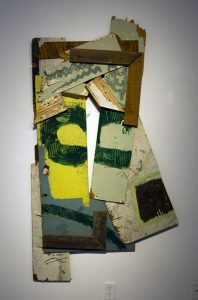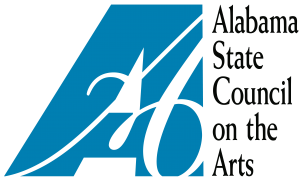
The Paul R. Jones Museum is proud to present Charlie Lucas: Talking to the Ancestors, October 2 – February 26, 2021.
The Paul R. Jones Museum has extended the exhibition through April 30, 2021. Link to an online exhibition here.
The iconic, self-taught artist, Charlie Lucas, is the youngest of a pantheon of outsider artists who rose to public attention in the latter part of the twentieth century. Lucas bridges a couple of generations of artists, said museum director Daniel White, “Starting with Bill Traylor, then Jimmie Lee Sudduth and Mose T, Charlie is the last in a long lineage of black folk artists in Alabama that began over 100 years ago.” In his own family, Lucas is the descendent of several generations of artisans and craftspeople, including his grandfather and great grandfather who were blacksmiths. He traces his work directly from them.
“This show is a way for us to present Charlie to our public that will show decades of work brought together for the first time,” noted White, “While he is identified as a folk artist, this show will present his work in a manner that transcends folk art and hopefully create conversations of how limitless art can be. If you know Charlie Lucas, then you know he has no limits with his imagination, and the universe is his studio.”
Paul R. Jones Museum Curator Emily Bibb noted, “We’re excited to showcase the work of an Alabama legend by bringing Charlie Lucas’ work to the Jones Museum. By bringing this solo exhibition to Tuscaloosa, we can show a broad range of works that highlight his masterful ability as a sculptor.”

Guest curator Paul Barrett was excited to add, “I worked with Charlie to focus on paintings and sculpture from the 1980s, along with pieces that reference the most important points in his life. His friendship with Lonnie Holley and his deep connection with Selma next-door-neighbor Kathryn Tucker Windham both make multiple appearances in his work. One of the paintings included here was created in Venice for an exhibition organized by Martha Henry during the 2011 Venice Biennale (which also featured Lonnie Holley, Mr. Imagination (Gregory Warmack), and Kevin Blythe Sampson). Two of the paintings may not have been shown publicly since the University of Alabama Press published Charlie Lucas: Tin Man in 2009. Talking to the Ancestors leaves no doubt that this is one of Alabama’s greatest living artists.”
Lucas’ work has been included in early, transformative exhibitions of self-taught, outsider artists including the High Museum of Art’s groundbreaking 1988 exhibition, Outside the Mainstream: Folk Art in Our Time. His work was part of Passionate Visions of the American South: Self-Taught Artists from 1940 to the Present, 1993; Pictured in My Mind: Contemporary American Self-Taught Art, Birmingham Museum of Art, 1995, and the Ogden Museum of Southern Art’s group show Ogun Meets Vulcan: Iron Sculpture of Alabama with Thornton Dial, Lonnie Holley, Ronald Lockett and Joe Minter in 2007. Lucas’ work has appeared in numerous solo and group exhibitions over the last four decades including the New Orleans Museum of Art, Birmingham Museum of Art, Montgomery Museum of Fine Arts, Southeastern Center for Contemporary Art in Winston-Salem, North Carolina, and Rosa Parks Museum and Library at Troy University-Montgomery.
This exhibition is generously funded in part by the Alabama State Council on the Arts. 
If you’re downtown in December, don’t miss another Charlie Lucas-related exhibition: The Black Belt Artist Project exhibition at The University of Alabama Gallery, opening December 4, 2020.
The Paul R. Jones Museum is an essential part of the education and development of UA students and our community. Admission to the gallery is free. The gallery is open to the public with reduced capacity, limited to ten (10) visitors at a time. Visitors must wear face coverings inside the gallery and maintain a minimum distance of six feet from others. Hours are Monday-Friday, 9 a.m. to 5 p.m. Call the museum at (205) 345-3038 or email the director for more information. The Paul R. Jones Museum is located at 2308 Sixth Street, in downtown Tuscaloosa, one block from the Dinah Washington Cultural Arts Center.
For more information about The University of Alabama’s programs in art history and studio art, visit our Degree Programs page.